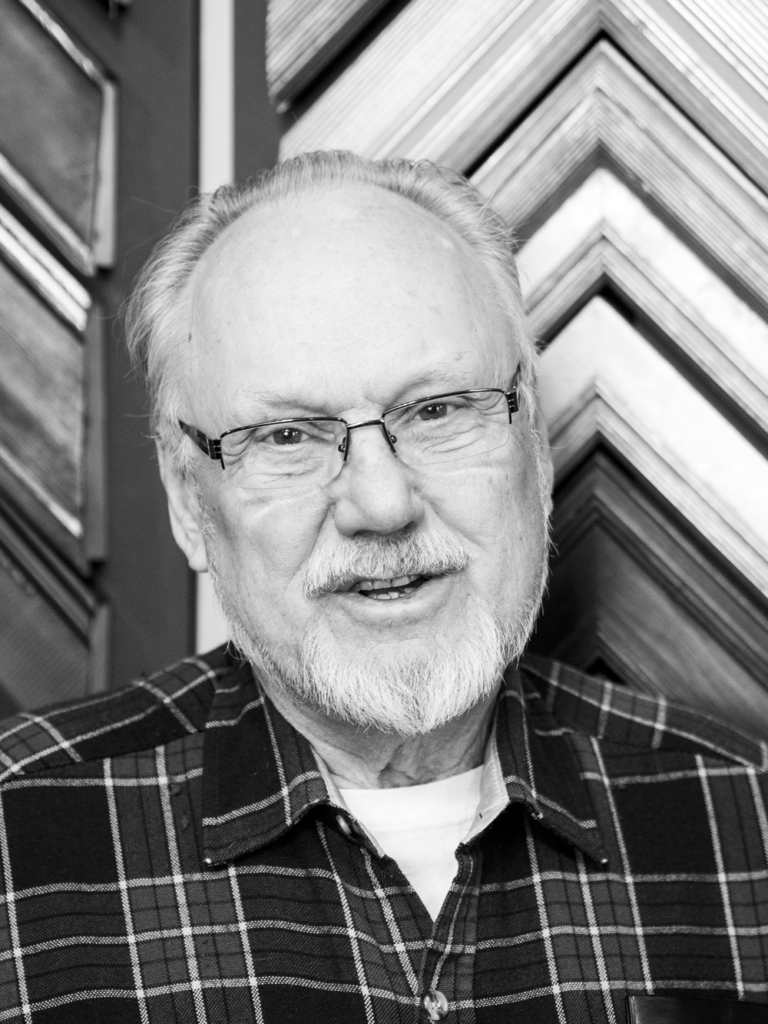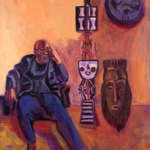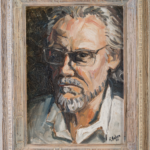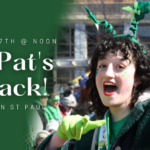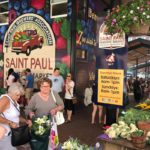Nigel Parry, Downtown St. Paul Voice —Roger Nielsen has spent well over half a century avoiding being a jack-of-all-trades so he could be a master of one. At 79, he is known internationally for professional grade restoration of antique art, and for creating frames that grace the Minnesota State Capitol, Presidential libraries, and masterpieces by some of history’s most noted artists that hang in museums and galleries around the world.
Nielsen’s career in framing began with a family friend, Tom Juhl, who literally stepped off the boat with Roger’s father. At the time, Roger was attending the Art Institute of Chicago and Juhl framed several pieces of his artwork for a show.
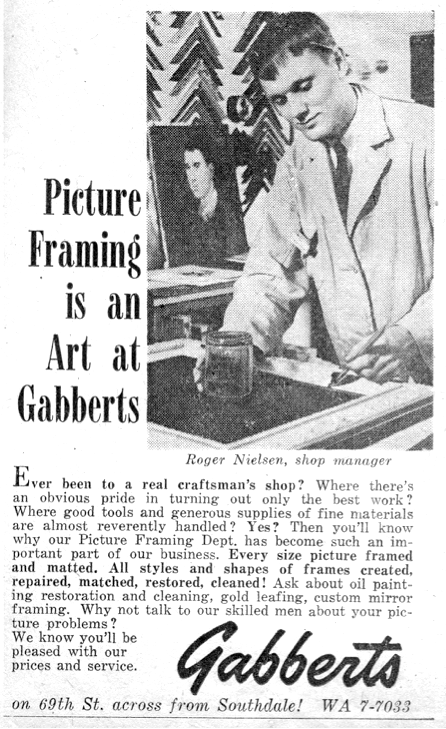 “With my youthful optimism, I assumed I’d just sell everything at the show,” Roger remembers with a smile. “Well, I sold one little drawing for $35 and I had a $485 framing bill, which today would translate to $6,000. And here I was, an unemployed student, so I had to go and work off my bill. I was Tom’s first employee.” That business evolved into the largest picture frame supplier in the world.
“With my youthful optimism, I assumed I’d just sell everything at the show,” Roger remembers with a smile. “Well, I sold one little drawing for $35 and I had a $485 framing bill, which today would translate to $6,000. And here I was, an unemployed student, so I had to go and work off my bill. I was Tom’s first employee.” That business evolved into the largest picture frame supplier in the world.
When Gabberts furniture store decided to offer picture framing, they hired Nielsen to open a frame shop, which turned out to be quite a challenge for him, then just 22 years old.
“I had to design the space, buy all the equipment, and basically set the shop up from scratch,” he said.
Two years later, after a falling out with owner Don Gabbert, Nielsen opened Nielsen’s Studio at 43rd and France avenues in Edina.
“I ran that for a few years and then, like most people in that time, I got a divorce, went back to school, and became a kind of a hippy and dropout, bought a farm in Wisconsin, and continued to make molding in my barn for frame shops in town.”
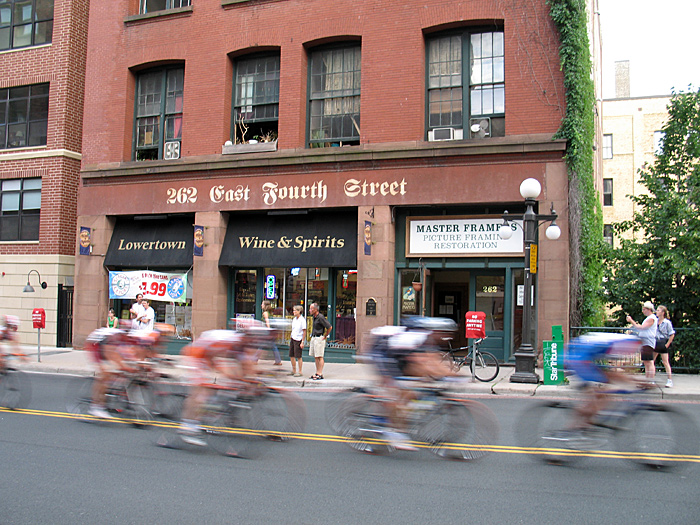
Early 2000s-era bike race outside 262 East 4th Street, the once-abandoned Lowertown warehouse Roger owned for four decades and which still is home to Master Framers. (Photo: Brian Struble)
In the mid 1970s, Nielsen opened Master Framers in an abandoned Lowertown warehouse at 262 E. 4th St. In the early days, he framed all kinds of pictures, posters and mirrors in the 6,000-square-foot space, in what he said was a mostly deserted neighborhood filled with “nothing but winos and pigeons.”
“We ran that shop for a couple of years,” he recalls, “and we were getting bored with it – mostly framing posters and that sort of thing – so we decided that if we were going to stay in the framing business we were going to become one of the top frame shops in the country. So we started doing hand-finishing and hand-carving, eventually developing quite a national reputation.”
One of the things that made Master Framers unique was that it milled all of its own moldings, with enough knives in the shop to create approximately 450 patterns. Gilding also became a speciality.
The process of creating mouldings
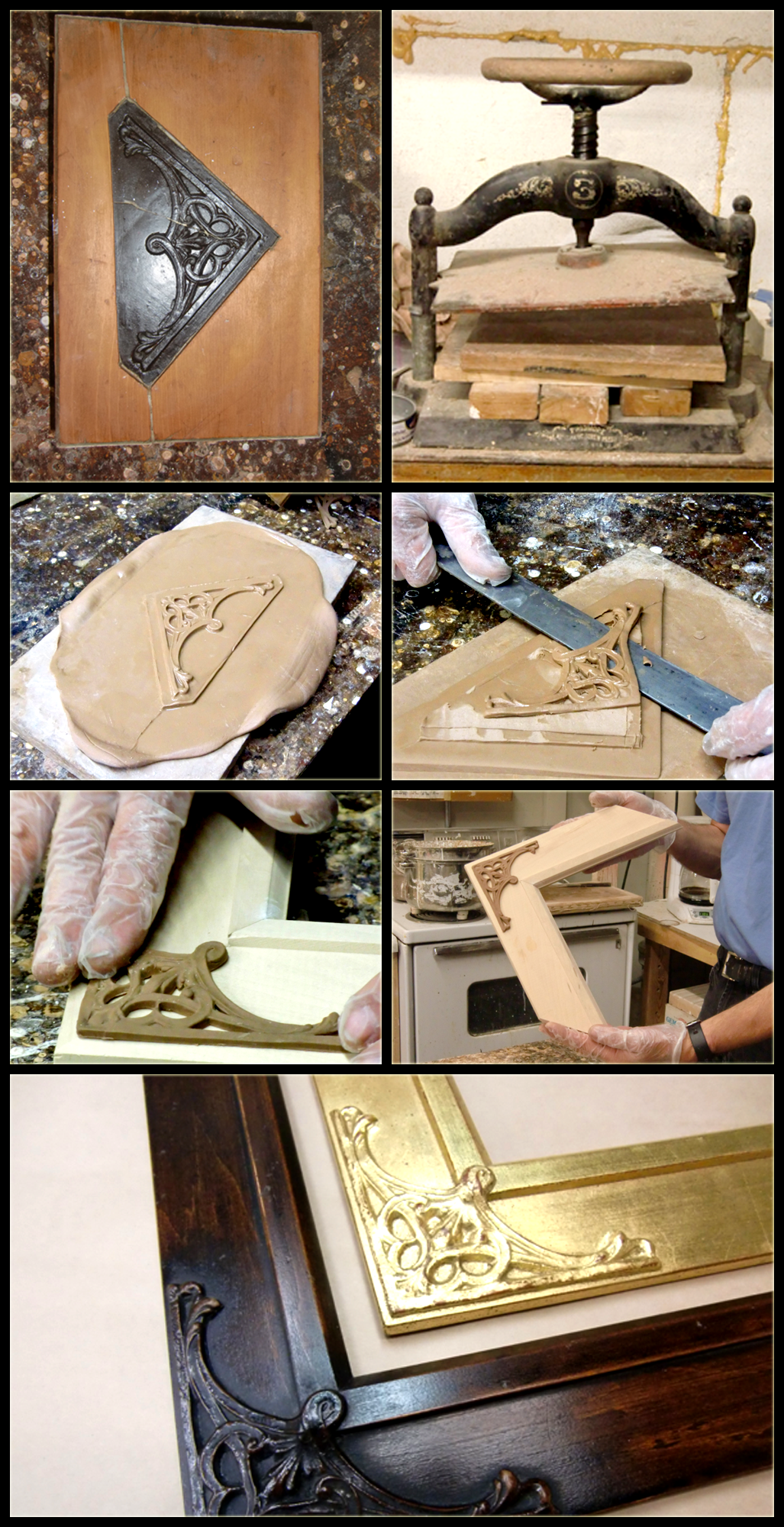
THE PROCESS OF CREATING MOLDINGS
Top: The metal mold, mounted on wood. After clay or resin is applied, the mold is placed in a press.
Middle: The pressed mold is filed and mounted on the frame, ready to be stained.
Bottom: After gilt is applied, the finished frame. (Courtesy: Master Framers)
“We did a frame for the George H. W. Bush National Library,” said Nielsen. “The artist called me up and said ‘I need a frame that’s similar to the one you did for Gerald Ford that’s hanging in the National Gallery.’ It was 10 foot-by-10 foot, 12-inches wide, 8-inches deep. We had to make it hollow to make it lighter. It took us three days to make and used 3,700 sheets of 22 carat gold. At 90 cents a sheet in those days, there was over $3K of gold on it.”
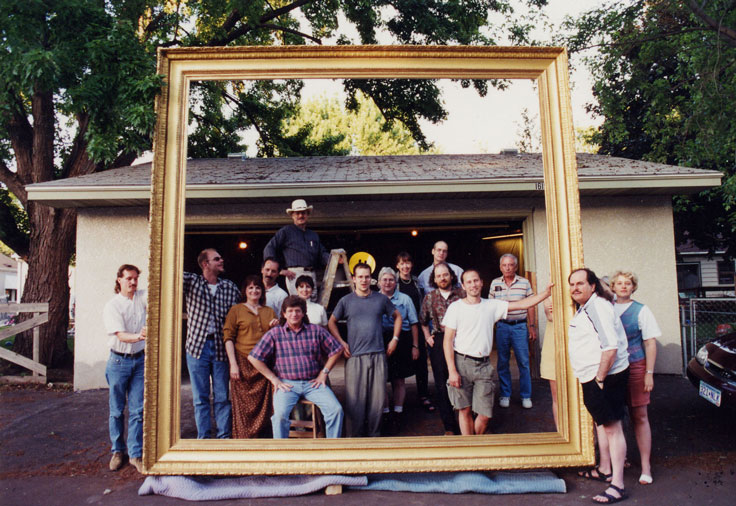
The Master Framers crew with the 10-by-10-foot frame they created for the George H. W. Bush National Library.
Master Framers has also completed many projects for the Minneapolis Institute of Art over the years.
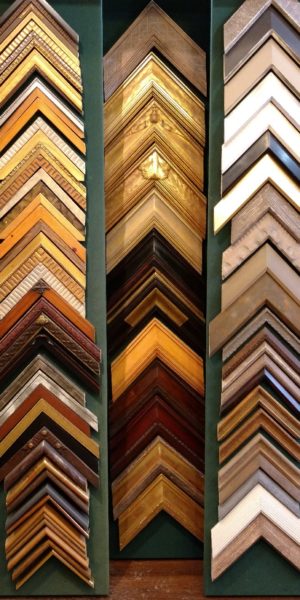
Some of the many styles of frame border offered by Master Framers. Click for an enlargement or visit Master Framers’ website at www.masterframers.com.
“We have about 35 major frames over there,” said Nielsen. “For one Gauguin (art by French painter Paul Gauguin) that we were contracted to frame, we were sent a ton of photos from another Gauguin that was hanging in the Louvre (in Paris, France). We had to reproduce that frame right down to the wormholes. I like to joke that we’re pretty good antique makers.”
As well as providing affordable housing for artists in the 262 building on East Fourth Street for many years, Nielsen served as a member of the Lowertown Redevelopment Corporation for more than three decades, advocating for the artists’ community that had been one of the inspirations for investment in the neighborhood.
The development of Lowertown in the last decade, most notably the restoration of the Union Depot and conversion of the old Gillette building at the eastern end of Fourth Street into a light rail garage, was incredibly intrusive for local businesses. Nielsen is concerned about the “mixed bag” that has resulted.
“For me, as a business in Lowertown it’s often been a matter of survival, literally the whole time we’ve been down there,” he said. “On one hand, we’ve lost a lot of the artist community. On the other, the more people that move down here, the more opportunity there is for local businesses.”
These days Nielsen is semi-retired and spends a few days each week in Lowertown and the rest on the rural Wisconsin farm he shares with his wife, Vicki. Meanwhile, the staff at Master Framers continues to do what they do best, serving the global community with professional grade services and an unparalleled expertise sought out around the globe.
Two upcoming exhibits featuring Roger Nielsen during the Fall 2019 Saint Paul Art Crawl
Roger Nielsen is having an exhibit at The Show Gallery, opening a day before Art Crawl on October 10 with a reception from 5-9pm. The show is a marriage of Roger’s love of painting and framing and will feature many of his original frame designs on his art and on the art of others. The exhibit will hang until October 20th. Stop by during the Saint Paul Art Crawl, October 11, 12 and 13.
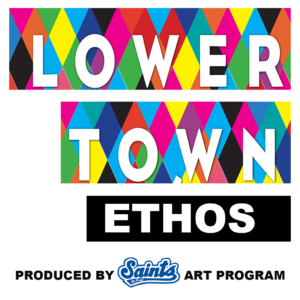
Lowertown Ethos is a community art exhibit taking place in the Farmer’s Market this art crawl. Read more here.
Lowertown Ethos is a community art event organized by Rachel Wacker celebrating the creative residents of St.Paul’s storied art district, produced by the St. Paul Saints Art Program and sponsored by local businesses. The three day event features a fine art exhibit using the Farmers’ Market pavilion pillars as “walls” for the art, live music and dance performances, screen printing demonstrations, and an interactive art game.
The St. Paul Saints Art Program commissioned 39 Lowertown artists to make original works for the exhibit.

